The philodendron is a popular, air cleaning houseplant that many beginners grow in their indoor gardens. These fast-growing, perennial plants are loved for their beautiful foliage.
They trail, they hang, they climb, they can be a compact, stand-up plant, and most importantly, they grow! These plants can fill in spaces in need of decoration or stand completely alone beautifully on a table, desk, or bookshelf.
Let’s learn how to care for the philodendron and keep them growing beautifully.
- List of Houseplant Care Guides
Philodendron Overview
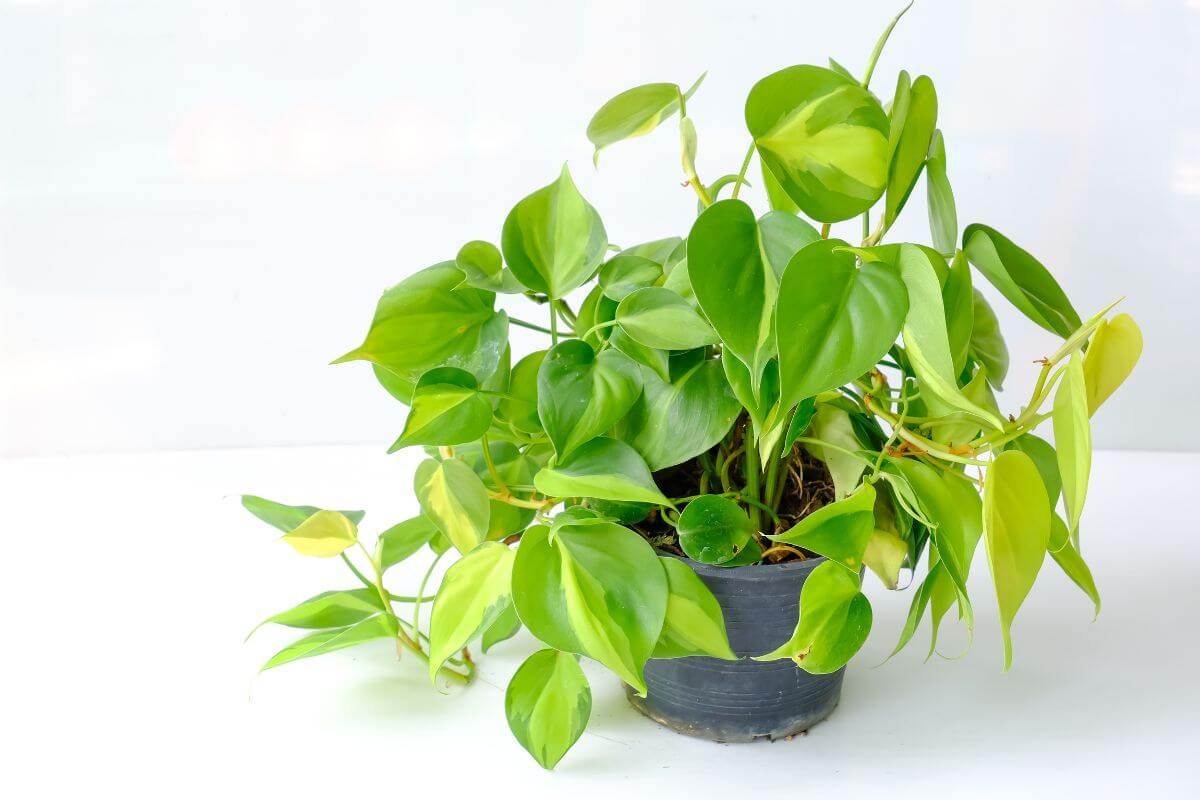
Native to Central and South America, its leaves are generally large, green, and glossy. The philodendron will offer a nice spot of vibrant green to any location. The name of the plant comes from Greek: “Philo” signifying love and “dendron” signifying tree.
The philodendron genus actually includes hundreds of different species. This is one big family of jungle plants that come in various shapes, sizes, and colors.
A member of the Araceae family, Philodendron comes in two basic versions: vining plants that can climb or hang, and the non-climbing varieties often referred to as “self-heading.”
Vining philodendrons will grow several feet of the vine and require something to climb onto like a trellis, a pole, or similar. The philodendron that does not climb will create exceptionally lush foliage in containers.
Philodendrons are often confused with pothos plants. The leaves will help you differentiate between the two plants. While they are similar in shape, the pothos plant will have variegated leaves with white or yellow splotches on them.
This particular plant grows relatively quickly. Although it is best to plant them in the spring, they really can be planted as a houseplant at any time of year.
As mentioned earlier, there are more than a 450 philodendron varieties. Some of the more well-known types of philodendrons include:
- Philodendron Bipinnatifidum – A large philodendron with lobed leaves that is also referred to as the Lacy Tree philodendron.
- Philodendron Erubescens, Black Cardinal – This Red-Leaf philodendron variety is quite the climber and features dark red, brown, or black stems and leaves.
- Philodendron Hederaceum – A perennial vine philodendron with heart-shaped leaves.
- Philodendron Melanochrysum – Another vigorous climber, this type boasts leaves that are dark and velvety with spots of bronze.
- Philodendron Rojo – This is a smaller philodendron hybrid that will remain small.
- Philodendron Scandens – One of the most popular climbing philodendrons, it features heart-shaped leaves that are of various colors.
Related Article: Philodendron Black Cardinal Care Guide
Philodendron Care Guide
In order to best care for your philodendron, you will want to recreate their natural, tropical environment. A comfortable, warm temperature with good humidity near a sunny window will make this plant extremely happy.
If you have a yard to plant them outdoors when the weather is warmer, your philodendron will enjoy the fresh air and exposure to natural light. They should, however, be placed in the shade, because direct sunlight can burn their leaves.
Since philodendrons grow large leaves, these leaves should ideally be dusted off with a damp cloth at regular intervals.
If you have the vining version, and you feel that the vines are too long, whether hanging or climbing, simply cut them back to your desired length, preferably during the spring or summer seasons.
Soil for the Philodendron
Philodendrons prefer loose potting soil that is rich in organic matter, and the soil must be well-draining. Equal parts peat, potting soil, and sand will keep your plant happy and growing.
The soil pH level should be acidic with a value of approximately 5.5 to 6.0.
Philodendrons are sensitive to salt buildup in the soil from watering. In this case, leaves may turn brown or yellow, or a combination of the two.
You can flush your plant out by placing it in a sink, and watering it thoroughly until the water runs out of the bottom drainage hole in the container.
Eventually, however, a soil change will be in order. With indoor potted houseplants, the soil should be replaced about every two years.
Temperature for the Philodendron
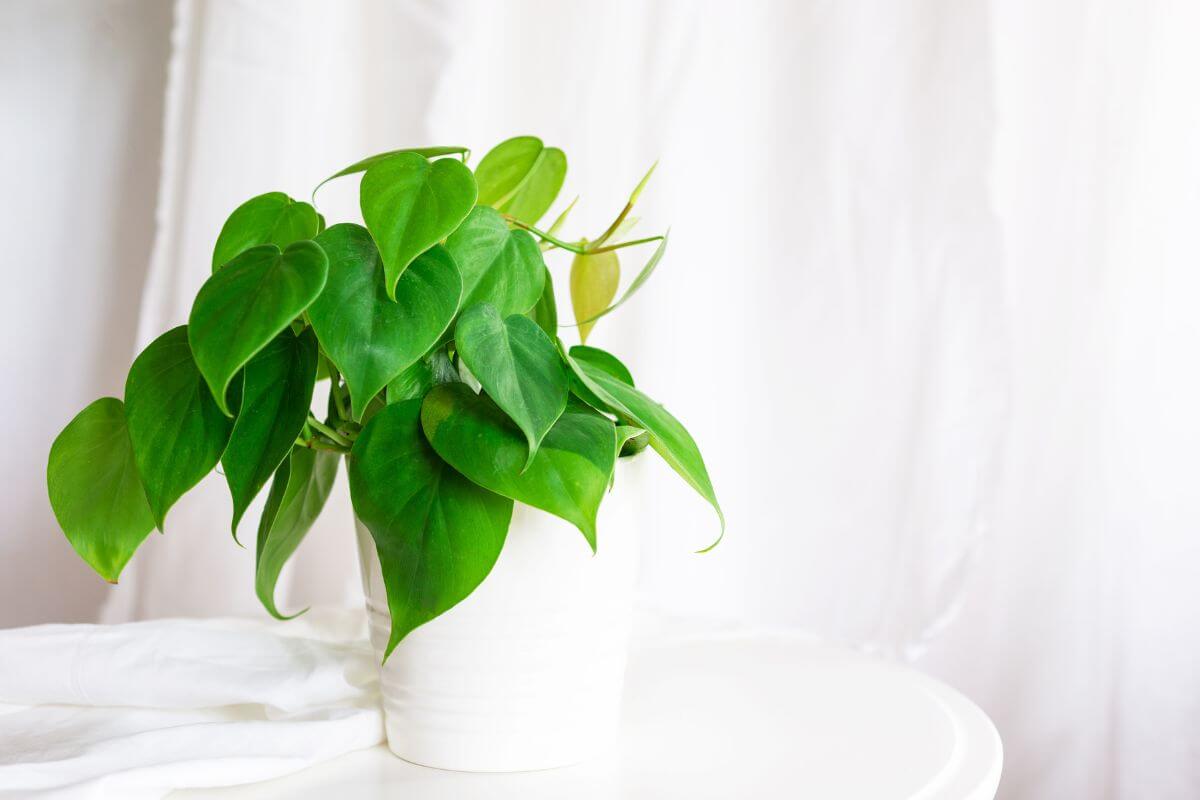
Temperature is based on the species of philodendron. Generally, no philodendron should have exposure to a temperature that falls below 55°Fahrenheit.
If the average home or office temperature sits between 65°F and 75°F, that would be good for your philodendron. It’s best not to let it drop below 60°F for safety.
Even if cultivated indoors, they must be protected from cold or cool drafts and should not be placed near an air conditioner or its vent.
Light for the Philodendron
Your philodendron will grow best in partial sunlight. Indirect, bright light is how it can thrive the most. In their natural habitat, they would receive dappled sunlight, thanks to a canopy of tropical vegetation. Direct sun is ill-advised.
If you are placing them in your home or office, a sunny window that provides bright, indirect light would be preferable. They can also grow under the artificial lights at your office. Low light conditions are not a problem either.
If your plant receives insufficient light, it may take on a leggy look with gaps between individual leaves. On the contrary, too much light can turn the leaves yellow. An occasional yellow leaf is nothing to worry about as it is a normal indication of aging.
Water and Humidity for the Philodendron
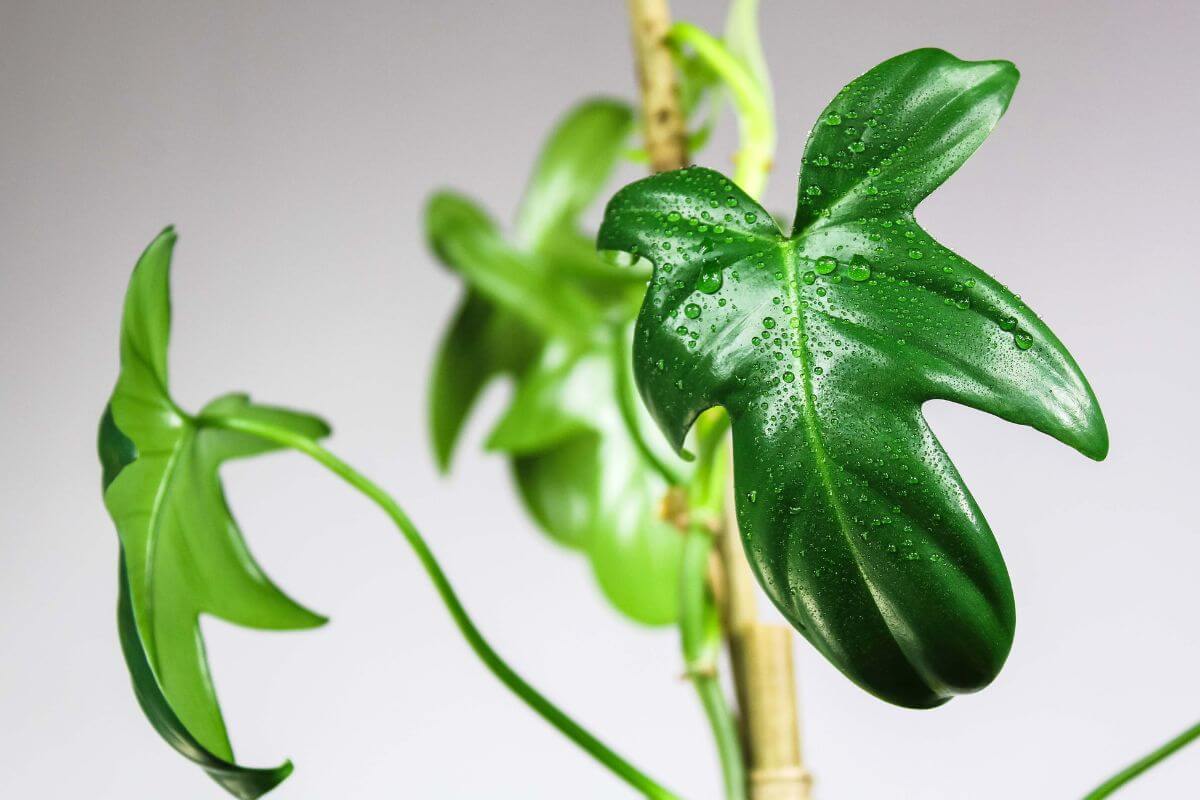
Philodendrons enjoy moist soil and should be watered regularly. Depending on the climate where you live, you should water once every week or two when the soil bed is dry.
They should be watered when the topsoil is dried out about an inch deep. You can test the moistness by sticking a finger in to see if it’s dry.
If the sunlight exposure increases, you’ll need to increase watering frequency, since the soil will dry quicker. The non-climbing variety will be a bit more tolerant of drought than the vining kinds.
Make sure the pot has moist, well-drained soil. These plants do not like soggy soil as that will lead to root rot.
The plant will let you know if it has a problem with its watering schedule. Leaves will begin to droop when they are overwatered or underwatered.
If you live in a dryer climate, know that philodendrons enjoy humidity. You can mist your plant every couple of days with water in a spray bottle.
Another way to add humidity is to place a humidity tray underneath the plant container. This is a tray filled with pebbles and water. However, check to make sure that the pot is not touching the water because of the risk of root rot.
Fertilization for the Philodendron
A liquid foliage houseplant fertilizer that is liquid should be fed to your plant once a month during the spring and summer months. They will appreciate a NPK (Nitrogen-Phosphorous-Potassium) all-purpose balanced fertilizer.
In the fall and winter, it can be reduced to every 6 to 8 weeks. If your plant is undernourished, its growth will slow considerably, and the leaves may grow smaller than what would be normal for the philodendron.
Should the leaves begin to blanch and lose their coloring, you’ll know that it’s hungry for nutrients. At that point, add some liquid fertilizer to help revive it.
Pruning and Repotting the Philodendron
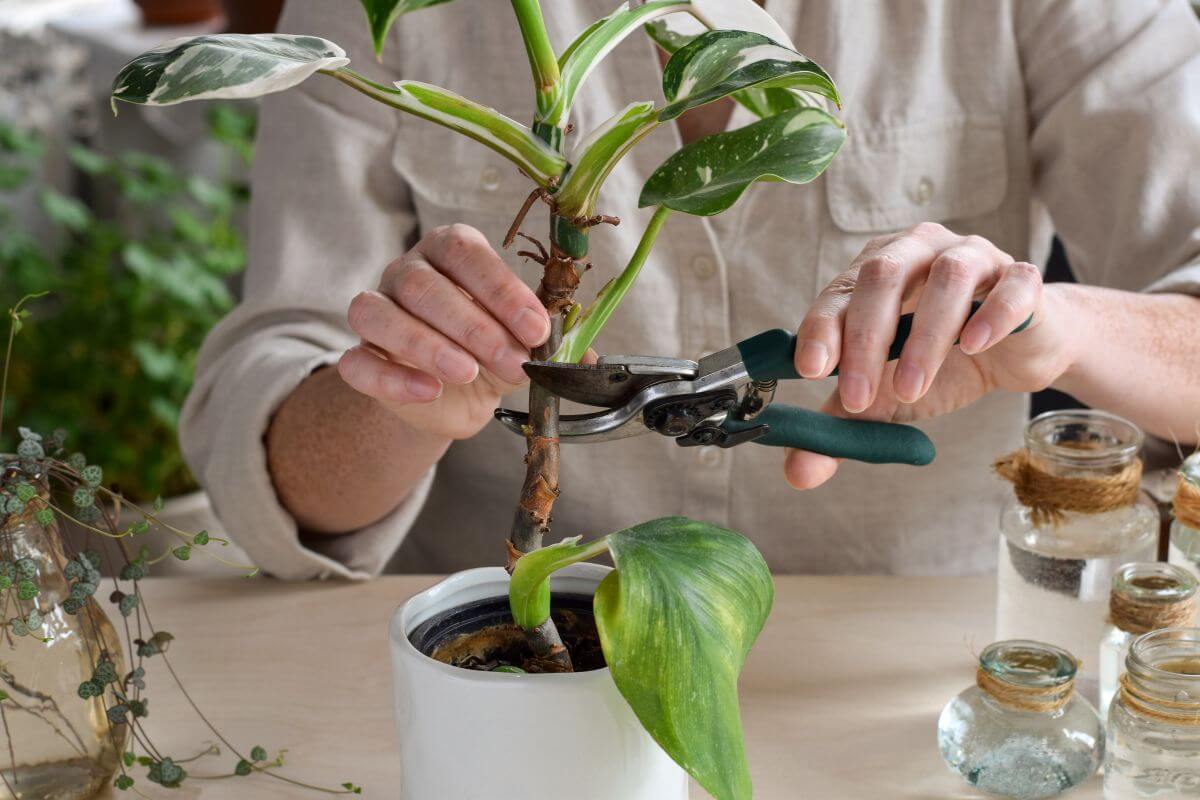
A young philodendron plant may start with a height of about six inches. If you do not prune it, the vine species can grow easily to a length of ten feet. Consider cutting back to encourage foliage and avoid the leggy look typical of vining plants.
These vining or trailing philodendron plants need to be pruned regularly, otherwise, they will grow to the floor, and then climb back up your walls or whatever is nearby. The aerial roots along the vines can ruin plaster, paint, and anything they find in their path.
Always use clean, sharp scissors when pruning to avoid transferring bacterial or fungal infections among plants.
If your philodendron is new, it should be potted in a container that is slightly larger than its root ball. The pot should also have ample drainage holes in the bottom.
If you notice that the plant’s roots are poking through the holes in the container, it’s time to repot with a new pot that is one size larger than the current container.
The ideal period of the year for repotting is during the late spring or early summer months.
How to repot the philodendron:
- Select a pot one size larger that has drainage holes.
- Gently slide out your philodendron from its old container.
- Look for any sign of root rot and remove those bad portions of roots first.
- Place the plant in the new pot and add in fresh soil.
- Water the plant.
Propagating the Philodendron
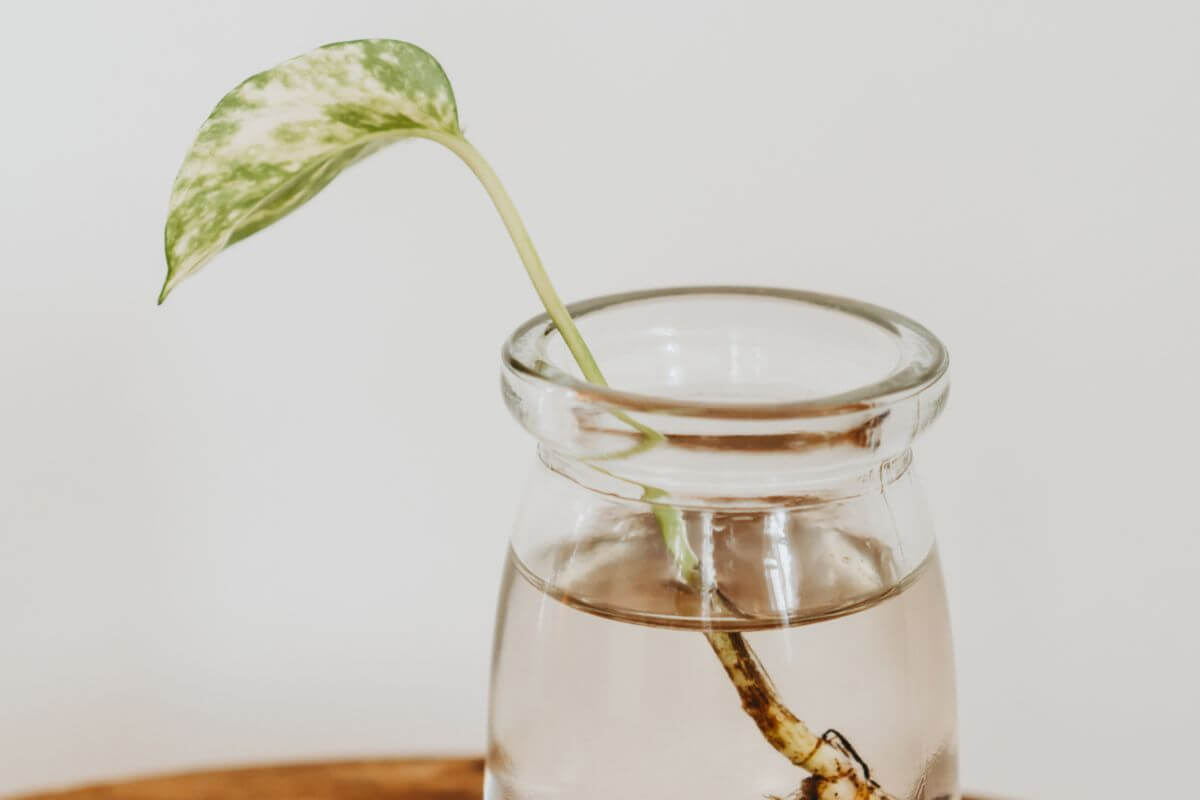
If you have a vining type of philodendron plant, it will be very easy to propagate using stem cuttings. The steps to propagate a stem cutting:
- Cut a portion of the vine that is approximately six inches in length.
- Place it in a jar of water to allow roots to develop. If you add a bit of rooting hormone, it will help, but it is not necessary.
- When roots have developed, you can move the cutting into a pot with moist potting soil.
Philodendrons that are of the non-climbing type will often sprout plantlets around the parent plant. The plantlets can be removed carefully with their roots intact. Transplant them to another container with fresh potting soil. They should be watered until the soil is moist.
Philodendron Common Pests, Diseases, and Problems
While relatively resistant to diseases and pests, philodendrons are susceptible to common houseplant infestations of aphids, scale, spider mites, thrips, or mealy bugs.
These pests will cause leaves to turn pale and a webby substance can be found on the underside of the leaves. Mealybugs will leave cottony deposits on leaves.
These pests can be treated by using a horticultural oil such as neem oil or insecticidal soap. Mealybugs can be removed with a cotton ball dipped in rubbing alcohol.
If you notice the leaves turning yellow and beginning to drop off the plant, you have probably overwatered. If your plant is dying due to overwatering, you should remove the plant from all the wet soil. Remove any dead leaves or dying leaves from the plant and repot it in new soil. Do not water it for a week and allow it to rest.
If leaves begin to wilt, you have most likely underwatered or forgotten to water. If you notice that the stems have become soft or are turning black, your philodendron is probably suffering from root rot.
Brown tips on the leaves may indicate that the humidity is too low.
Since some philodendron leaves are quite large, dust should be kept off them to prevent clogging their pores. You can do this by gently wiping them with a damp cloth, or you can give them an occasional rinse in the shower. With glossy leaves, keeping them clean will help with photosynthesis.
Philodendron Toxicity and Pets
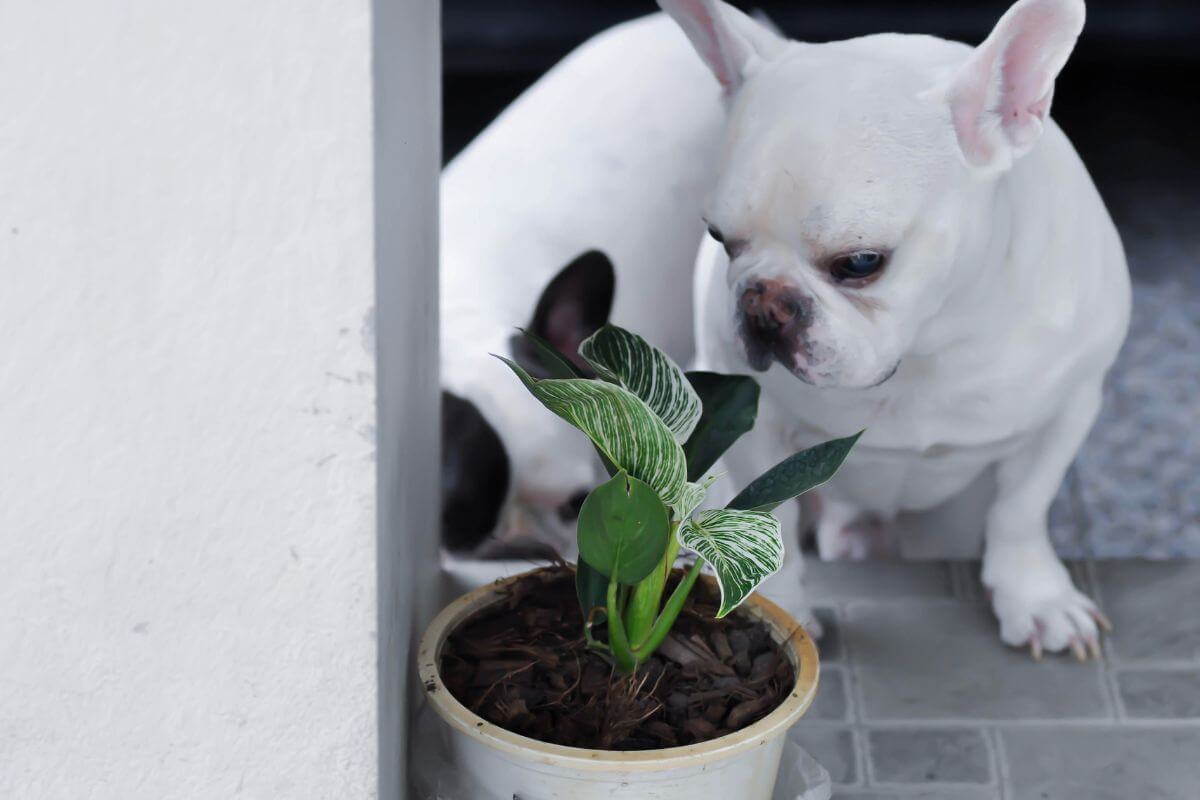
The philodendron is toxic to both humans and house pets if ingested. The leaves contain high amounts of calcium oxalate.
If your dog or cat exhibits any of the following symptoms, take them to a veterinarian as soon as possible.
- Swelling
- Diarrhea
- Excessive drooling
- Blistering inside the mouth or throat
- Pain in the mouth or throat
- Lack of appetite
- Nausea
- Vomiting
It is necessary to seek immediate medical help if you suspect philodendron poisoning, regardless if humans or animals.
The sap from the plant may cause skin irritation too, so be sure to wash your skin if you get the sap on you.
Philodendron Care Final Thoughts
If you are a beginner home gardener, the philodendron may be a great plant to start with. It adapts very easily to its location. With warm temperatures, moisture, and indirect light, your plant will add beauty to your indoor décor.
With so many kinds to choose from, you can most certainly find your ideal philodendron for a hanging basket or a pretty planter. One of these plants will also brighten up a desk at the office or decorate your place of business with style.
For other houseplants to fill out your home garden, check these guides out:
Philodendron Care FAQs
Do philodendrons need sunlight?
Yes, philodendrons need sunlight, but not directly. They prefer indirect sunlight, so if you cultivate them outdoors, make sure they have partial shade at least.
How often should you water a philodendron?
You should water your philodendron every one to two weeks during the summer months. Water only when the top inch of soil feels dry. This means that there’s no puddling around the roots. When watering, use lukewarm water rather than cold water because cold water can cause stress to the plant.
Is the philodendron a good indoor plant?
Absolutely! Philodendrons thrive indoors and require little care. In fact, they even look better indoors. Just remember to keep them well-lit and away from direct sun rays.
What kind of soil does a philodendron like best?
A mix of peat moss and perlite works wonders for growing philodendrons. Make sure to fertilize regularly using an indoor houseplant fertilizer.
Are coffee grounds good for philodendron?
Coffee grounds work just fine for feeding philodendrons. It can potentially help give a boost to plants that are growing slowly. To use, mix the coffee grounds in with the potting soil. Another option is to mix about one-third coffee and two-thirds water to water the philodendron.
Should I mist my philodendron?
Philodendrons like humidity, so mist can help if you live in a dry climate. You don’t want to overdo this though, spraying too frequently could actually harm the plant. Spray once a week during hot weather months.
How do I make my philodendron fuller?
To grow fuller leaves, feed the philodendron more often. If you notice that the leaves aren’t as full as usual, then try giving it some extra nutrients. Use a liquid houseplant food to fertilize and to help. You can also sprinkle a teaspoon of fish emulsion onto the soil each time you water.


